Christina L. Simms, Conservator of Objects and Sculpture, and Emmett Lodge, NACE Certified Coatings Inspector, both of McKay Lodge Conservation Laboratory, recently completed a conservation treatment of One, Two, Three, 1979, by sculptor Sol LeWitt in Syracuse, New York.
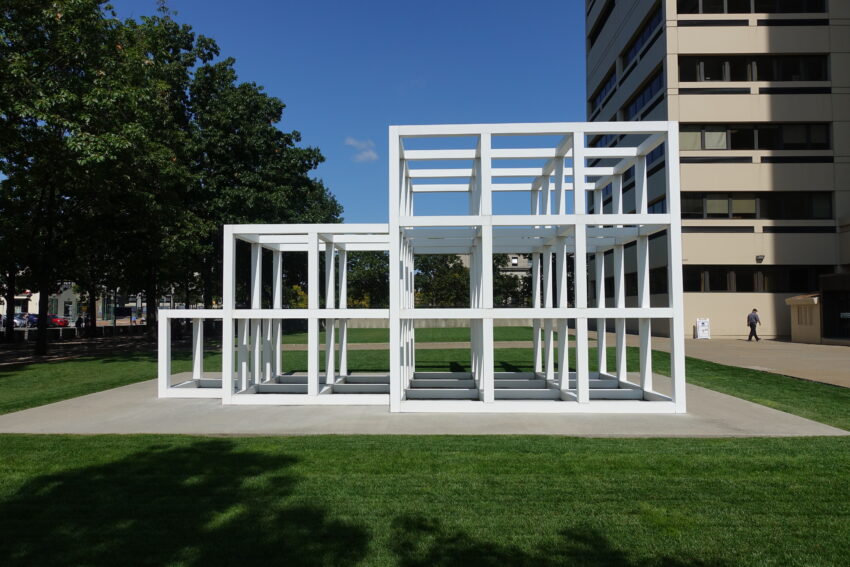
Do not let the title fool you, Art Conservation is not as easy as one, two, three; it is a long path to Become an Art Conservator, let alone to tackle a large outdoor sculpture recoating project.
Like nearly all conservation projects, the conservation treatment of One, Two, Three by Sol LeWitt began with a thorough condition assessment. The artwork was most recently examined by Robert G. Lodge, Conservator of Modern Art and CEO, of McKay Lodge Conservation Laboratory in 2018, but it had previous restoration campaigns by others including stripping and repainting during its lifetime.
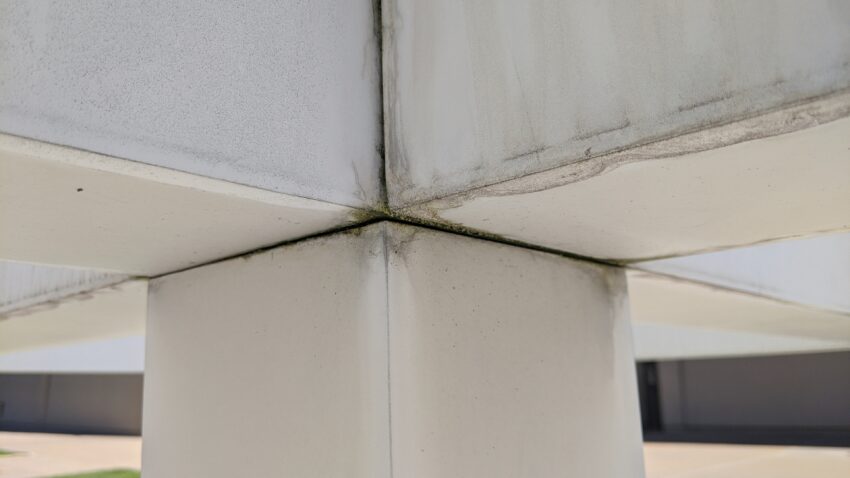
The paint on the aluminum was failing as demonstrated by chalking and flaking of the white topcoat An overall layer of grime and biological growth in the corners and crevices was also readily observed. Debris collects on the concrete pad in the interior of the sculpture and it cannot be easily cleared due to the small gap between the sculpture and pad. The surface also had evidence of the public climbing on the lower components, further damaging the paint.
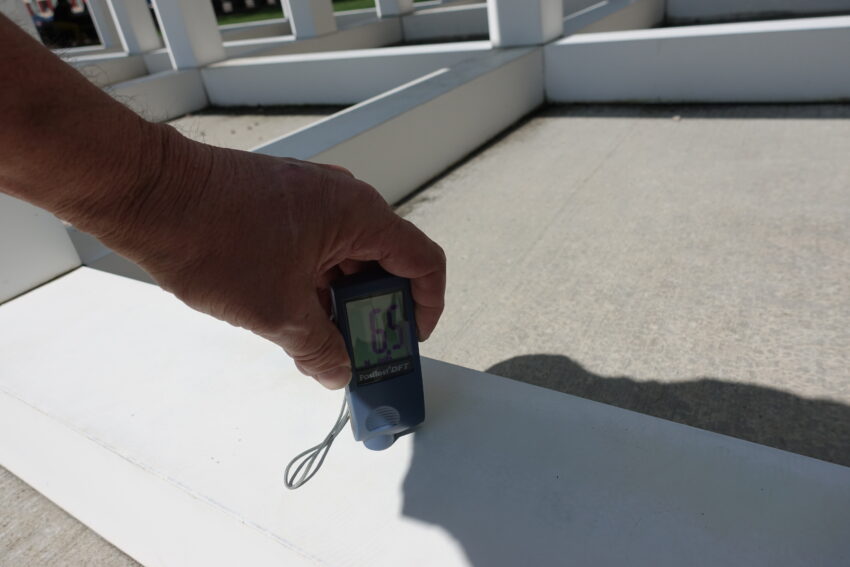
Conservator Lodge determined through dry film thickness (DFT) readings the current failed coating could be overcoated, instead of fully stripped and repainted. As described in past blogs, overcoating is a preferred method when possible; however, sometimes the layers of paint are so thick, the stresses of an additional coat can cause the entire accumulated build-up to flake and peel.
Two years after the condition evaluation and treatment plan development, it was time to perform the conservation treatment of One, Two, Three. Since the DFT of the existing failed topcoat could be over-coated, the surface would be simply abraded with power tools and hand-scraping, known as “scarification” in the coatings industry, then pressure-washed to clear any debris. A new coat of paint in a color the same as the original white could then be applied. For this new white topcoat, several paint systems were considered. A sample of the final color and finish was then sent to the client for approval before treatment.
A couple of concerns remained. For every treatment, McKay Lodge Conservation Laboratory conservation team endeavors to adhere to the Code of Ethics and Guidelines of Practice by the American Institute for Conservation while at the same time creating cost-effective solutions for clients. Conservators grappled with how to safely elevate the sculpture and what method to use to best apply a new coating.
The treatment solution was both minimally invasive and within budget.
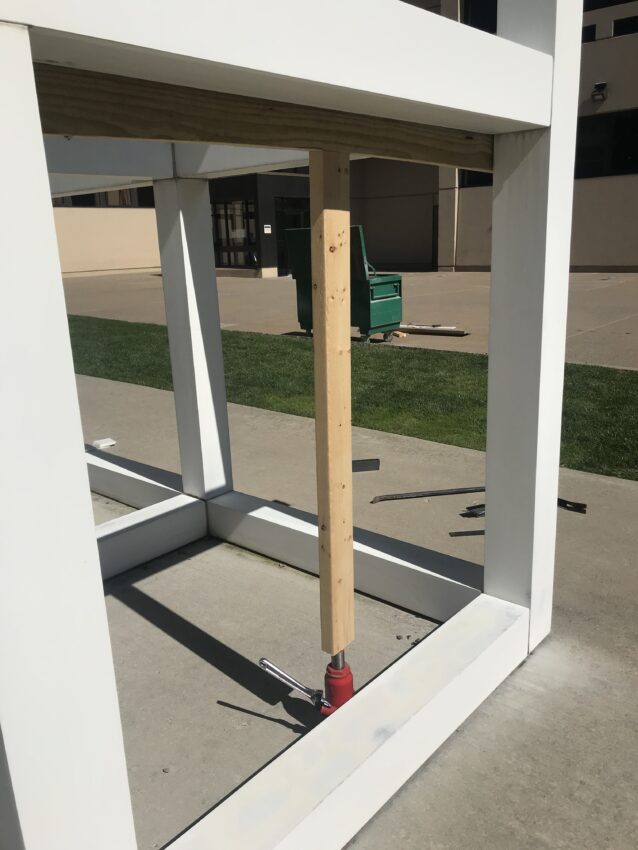
Conservator Simms and Emmett Lodge first worked to elevate the sculpture. The lower members were lifted using a portable jack and two dense wood boards; this allowed enough clearance to place two layers of 3/8 inch thick white Delrin® blocks under the artwork, creating a gap so the sculpture did not contact the cement pad.
Blocks were placed at each major corner and as needed. They created little to no visual impact. The resulting gap allows debris to be easily washed out from the interior grid during cleaning maintenance. The gap also helps prevent corrosion and premature coating failure along the bottom members of the artwork.
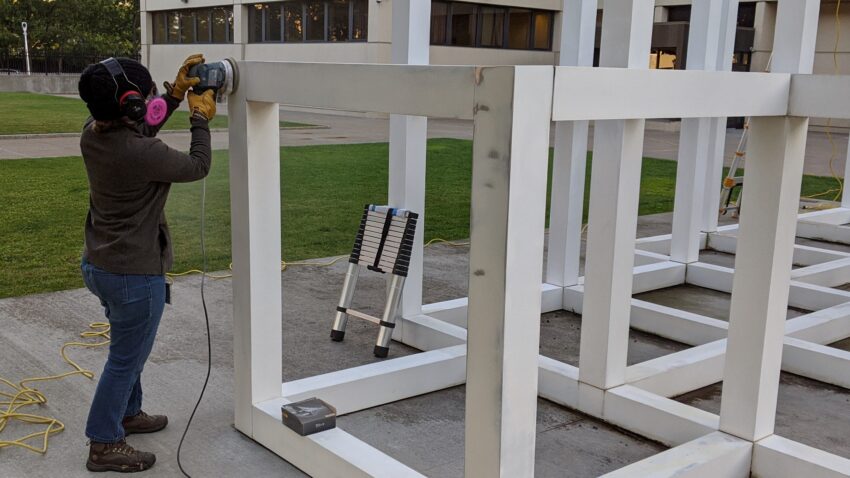
The top layer of failing paint was then sanded with aluminum oxide abrasive pads and hand-scrapers to remove loose, flaking paint to prepare the surface for overcoating. The sculpture and cement pad were then rinsed with a pressure washer, clearing any remaining dirt and debris. The surface was then allowed to thoroughly dry overnight.
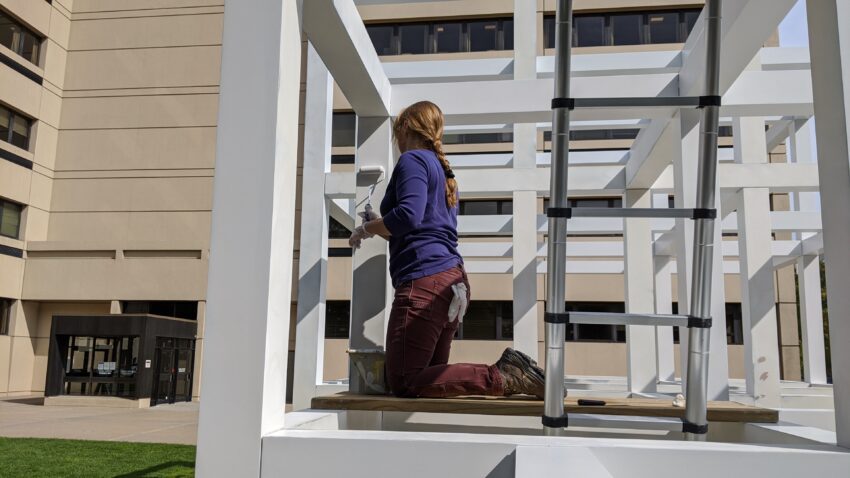
Two coats of high performance exterior low VOC acrylic in white were applied primarily with a foam roller and a trim brush in the corners.
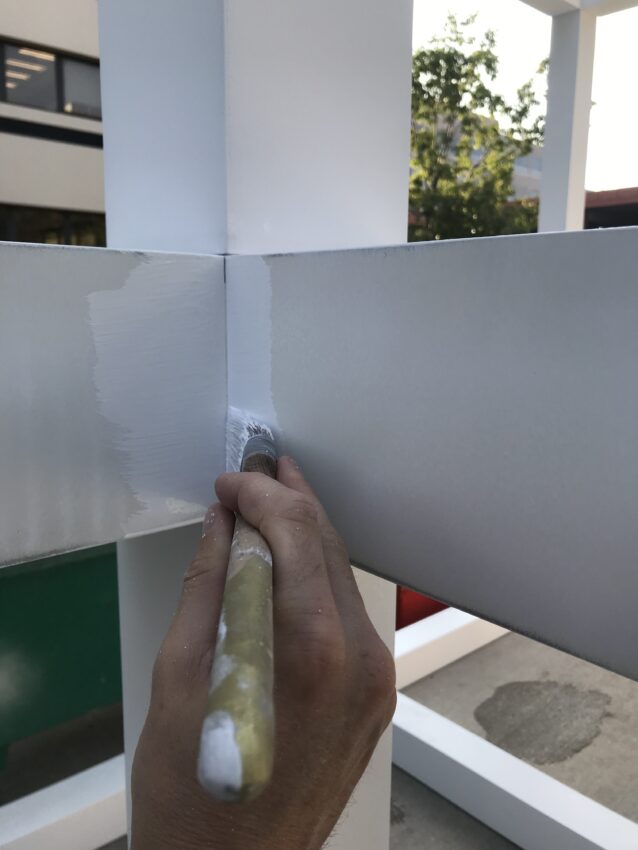
After the conservation treatment of One, Two, Three by Sol LeWitt, the sculpture might not look all that different from a normal viewing distance, since it has a uniform white coating similar to its original appearance.
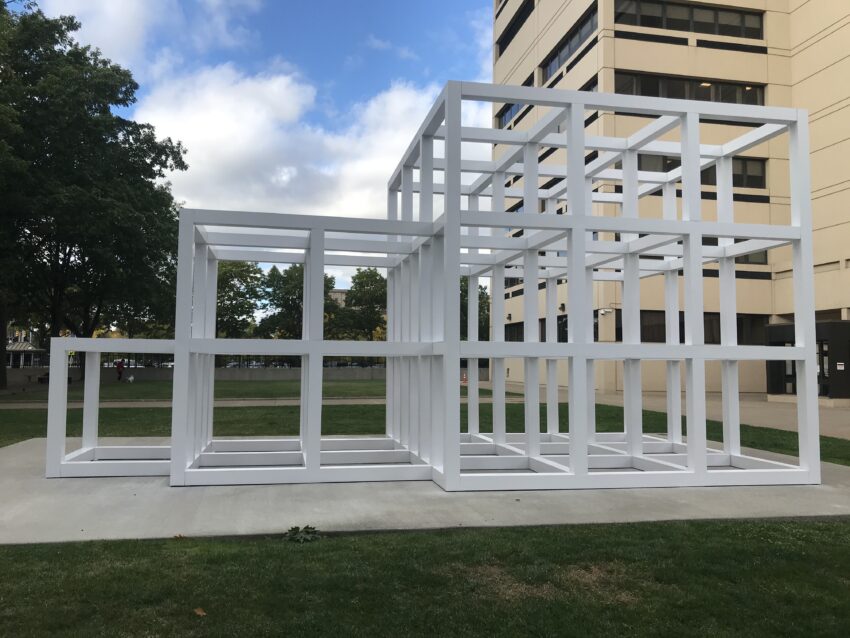
A close inspection from the interior reveals the opposite. There is neither dirt nor green biological growth on the surface and crevices remaining. Scratches from individuals climbing the sculpture have been eliminated. The elevation of the sculpture approximately a quarter of an inch from the cement pad also allows debris to be cleared from the interior of the sculpture during regular cleaning maintenance.
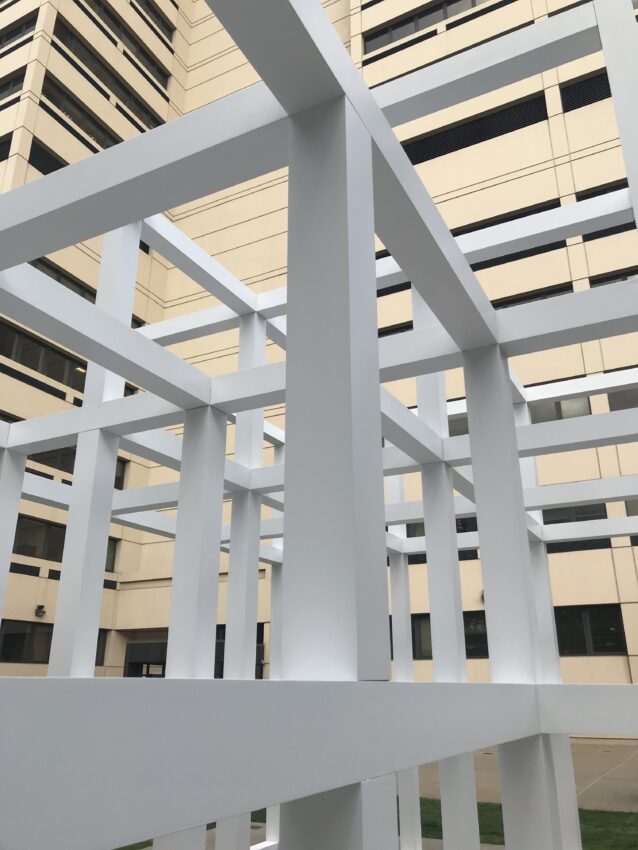
The late Sol LeWitt is considered a forerunner of the Minimalism movement which developed in the 1960s in America. Minimalism is characterized by artwork that uses simple, geometric forms. LeWitt was born in Connecticut to an Russian immigrant family in 1928. He took art classes as a child, and eventually completed his Bachelors of Fine Arts at Syracuse University; the same city where One, Two, Three, 1979 is located.
Sol LeWitt served in the Korean War, then eventually moved to New York City, where he worked a number of jobs doing paste-ups for Seventeen Magazine, as a graphic designer at the office of I.M. Pei, and at the book counter of the Museum of Modern Art (MOMA) where he met other artists. Within the coming decades, LeWitt became a famous sculptor with numerous artworks in major museums around the world such as the Tate Modern, National Museum of Siberia, Guggenheim Museum, and Hirshhorn Museum and Sculpture Garden in gallery settings and outdoor spaces.
And if you find yourself with a creative block in these dark days of 2020, Sol LeWitt might have some parting advice. As the late sculptor once said to his fellow artist Eva Hesse: “Don’t worry about cool, make your own uncool. Make your own, your own world. If you fear, make it work for you – draw & paint your fear and anxiety…”
